
National science academy of Ukraine
National science center "Kharkiv institute of physics and technology"
Institute of high-energy and nuclear physics

National science academy of Ukraine
National science center "Kharkiv institute of physics and technology"
Institute of high-energy and nuclear physics

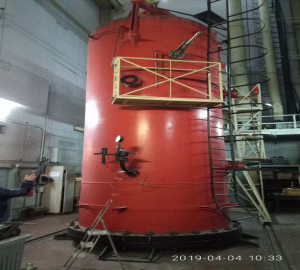

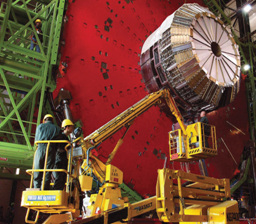

Department Of Fundamental And Applied Nuclear Research
Head Of Department – V.I. Kasilov ( Ph. D. In Phys.-math. Sc. )
Phone/Fax: +38(057)3356956
E-mail: kasilovvi@kipt.kharkov.ua
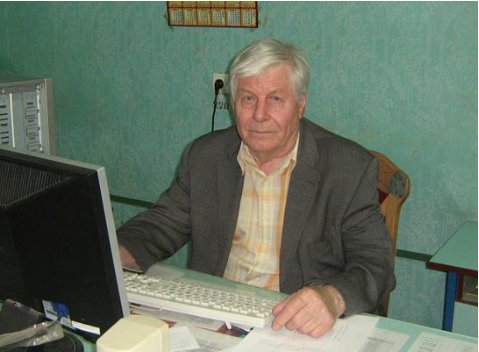
The department of fundamental and applied nuclear research was established in 1993, at the same time as the NSC KIPT, to carry out the fundamental-applied nuclear research and investigations into the processes of ionizing radiation-matter interaction. The researchers of the department have published more than 200 scientific papers. At present, there are in the research team: 1 Dr.in Phys.-Math. Sci and 7 Ph.D. in Phys-Math. Sci).
Main directions of research activity
1. Fundamental research in the field of nuclear astrophysics.
An experimental and theoretical study of stellar p-nucleus synthesis is at the center of attention
in many research centers of Europe, the United States and Japan. For investigation of r- and s-
nuclei production the velocities of (n,γ) -reactions are required, while for simulation of p-process
the most important reactions are reactions with low-energy protons (e.g. (p,γ) and (p,n)
reactions) and photonuclear reactions such as (γ,n), (γ,p) and (γ,α) in the near-threshold region
(γ-process).
Our institute has carried out a cycle of measurements on the cross-sections of (p,γ)- and (p,n)
reactions on zinc and selenium isotopes, using a proton beam from the electrostatic accelerator
VG-4M with energies of about 3 MeV. The experimental data obtained will promote the
modeling of stellar synthesis of 74Se p-nucleus and neighboring nuclei.
Integral yields of (γ,n)-reactions were first measured on a number of isotopes of ruthenium (Ru),
palladium (Pd), tin (Sn) and Indium (In) among which there are 7 p-nuclei. In these experiments
the bremsstrahlung from the tantalum converter of the accelerator LEA-30 (IHENP) was used.
The experimental results are included in the General (EXFOR) and Specialized (KADONIS)
nuclear database. It is important, that the experimental data obtained can be used for testing,
parameterization and further improving the statistical theory of nuclear reactions applied in
calculations of the cross-sections (and velocities) of those stellar reactions that cannot be
measured in the laboratory, but they occur in stars. The modern computer codes (NONSMOKER
and TALYS) were used for theoretical analysis of the experimental data obtained.
Experimental investigations were carried out in collaboration with the known scientific centers,
namely, the Institute of Electronic Physics (Uzhgorod, Ukraine), the Institute of Nuclear
Research (Debrecen) of the Hungarian Academy of Sciences, the Nuclear Reaction Laboratory
of the Notre Dame University (USA), and theoretical analysis was performed jointly with the
Department of Physics at the University of Basel (Switzerland).
2. Development of a compact neutron source for neutron and neutron-capture therapy using delayed fission neutrons.
A concept and a working model of a full-scale compact neutron source for neutron and neutron-
capture therapy of carcinoma have been developed. Compared to the existing neutron sources,
used in the world for neutron and neutron-capture neutron therapy of cancer, such a source will
have significant advantages due to its compactness and reduced financial expenses, as it can be
located directly in the clinic. Moreover, the quality of a therapeutic neutron beam, that can be
achieved (the moderated neutron beam density (2÷3) 10 9 neutron/cm2 s and the contribution of
fast neutrons no more than 1%), will highly competitive with the world standards. A dummy of
the neutron source will allow optimizing the techniques of neutron beam production in order to
obtain a therapeutic dose and to minimize an accompanying gamma-radiation and fast-neutron
background.
A neutron source dummy comprises a linear electron accelerator, at the output of which an active
zone is mounted for irradiation of a combined water-cooled neutron-producing target. The water
is used, besides cooling, as a moderator of neutrons produced in the target due to the
photonuclear reactions and the photofission when the electron beam interacts with a combined
target as well as during the nuclear fission by neutrons produced in the active zone. There are in
the active zone additional small targets made from fissile material, e.g.
238U enriched with
(2÷20)%
235U having a mass of (1÷2) cm3 , which after activation serve as compact delayed
neutron sources. Since an average delayed neutron lifetime is of about 10 s, such a target should
be moved by a pneumatic transfer system (if the target is solid) or by a circulation pump (if the
target is liquid) for a time of about 1 s at a distance of more than 20 m from the accelerator
bunker to the room where the moderated neutron beam former designed for irradiation of an
object (carcinoma) is located.
The delayed neutron radiation activity decreases according to the exponential law. The less time
during which the target emits delayed neutrons into the former after delivery, the higher the
neutron beam density. When the time of the target radiation into the former is up, it is sent to the
active zone, and a new activated target takes its place. Thus, the process is repeated cyclically
until a therapeutic dose necessary for cancer irradiation is accumulated.
For formation of a full-scale compact neutron source it is necessary to use a linear electron
accelerator with energy of 30 MeV and electron beam power of 10 kW.
3. Study of the interaction between the ionizing radiation (electrons, gamma-quanta and neutrons) and matter.
The processes of interaction between the beam of electrons of 9, 16, 20 MeV (J ∼ 0.5 μA/cm2 , D
= (1 ÷ 5) 106 Rad, Tirr = 300 ℃) and gamma-quantum fluxes with water, alcohol and glycerin
solutions of the following organic dyes: methylene-blue (MB) - C16H18N3SCl and methyl
orange (MO) - C14H14N3О3SNa were investigated.
The use of a liquid matrix for the investigation of organic and biological objects, on the one
hand, allows analysis of intact molecules of a dissolved substance with a much higher current
beam density compared to a solid matrix, and on the other hand, the solution is, most often, a
good radio protector that gives an opportunity to study its protective properties .
It is established experimentally that water solutions of all dyes have a less radiation resistance
compared to alcohol and glycerin solutions.
All methyl-orange solutions are less radiation-resistant compared to methylene blue solutions. A
significant distinction of the dyes under consideration is the presence in MO of alkali metal Na,
being a chemically active element, which, in the case of separation from the main molecule, can
participate in a number of chemical reactions.
It has been observed that in the case of similar gamma-quantum and electron fluxes gamma-
quanta make a less destruction of dye solutions.
Basing on the investigation results the estimation was made on the contribution of various
processes to the destruction of organic molecules (radiation-stimulated chemical reactions and
ionization to 90%, direct electron-nucleus interaction to 8%, cascade processes and influence of
gamma-quanta from the accelerator to 2%) depending on the solvent type.
The studies have shown that organic dye solutions can be used as ionizing radiation detectors.
4. Experimental investigations into the longitudinal and transverse response functions and their moments in the case of light nuclei.
Representation of the cross-sections of inclusive electron scattering by nuclei through the
longitudinal and transverse response functions is very convenient for data analysis, as these
functions provide more differentiated information about the electron-nucleus interaction. Thus,
the longitudinal response function is a result of the interaction between electrons and electrical
nucleus charges, and the transverse function occurs due to the interaction of magnetic moments
of nucleons with nucleus currents.
The researchers of the department have obtained experimental values of the response functions
and their moments in the range of transmitted pulses (q = 0.55 ÷ 1.63 fm-1 ) for different nuclei:
Experimental values of longitudinal response functions were used in order to test the advanced
models of nucleon-nucleon potentials, to verify the calculations of the exchange force
contribution to the first moment of this function, to determine the meson exchange current
contribution to zero moment of the nucleus response transverse function, and to reveal
manifestations of nucleon-nucleon correlations in the Coulomb sum.
Experimental values of the response functions and their moments for 6Li and 7Li were obtained
for the first time in the world. These values were used for finding the relation between the
behavior of SL (q), as a function of the transmitted pulse, and nucleus clustering, as well as to
estimate the size of the 7Li α-cluster. The estimate of this magnitude, obtained with an accuracy
more than two standard errors, shows that the size of a α-cluster is larger than the size of a free
particle.
Due to the obtained experimental values of the Coulomb sum, the values of the total Coulomb
energy of 4Ne, 6Li, 7Li and 12C were found. It should be noted that currently the values of the
total Coulomb energy are determined experimentally only for these 4 nuclei.
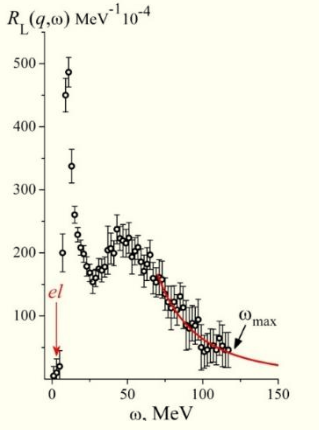
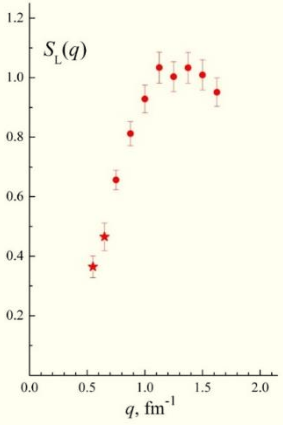
Selected publications in recent years
1. V. B. Ganenko, A. N.Dovbnya, V. I. Kasilov, G. D. Kovalenko, N.I. Maslov, V.L. Morokhovskyy, V. I. Truten’, S. P. Fomin, B. I. Shramenko, A. A. Grinenko. Dynamics of high- energy particle beams in crystalline structures, handling the beam and gamma-radiation properties // State Award of Ukraine in Science and Technology. 2013.
2. N. I. Aizatskiy, S. N. Afanas’ev, A.Yu. Buky, S. P. Gokov, L.S. Ozhegov, A.A. Parkhomenko, V. M. Khvastunov, N. G. Shevchenko. Investigation of atomic nuclei by means of electrons and photons with energy of 300 MeV//Kharkov, NSC KIPT, 2017, 393 p.
3. V. M. Khvastunov, V.V.Denyak, V. I. Kasilov. Calculation of a system for parallel 30 MeV electron beam transfer in the extraction channel of the accelerator LEA-300 //Problems of Atomic Science and Technology, series: Nuclear Physics Investigations, 2010, V. 3 (54), P. 205- 207.
4. V.I.Kasilov, A.Yu. Buky, S. P. Gokov, S.S. Kochetov, K. S. Kokhnyuk, L. A. Makhnenko, P.L. Makhnenko, I. V. Melnitskiy, V. F. Popov, I. L. Semisalov, O. A. Shopen, V. M. Khvastunov. Extraction channel for 30 MeV electron beam used in investigations of photo- and electron-nuclear reactions / /Bulletin of the Kharkov V. N. Karazin National University, Physical Series "Nuclei, Particles, Fields", 2010, No. 916, p. 3 (47), p. 78-81.
5. V. I. Kasilov. Photo- and electrofission of tungsten nuclei in the oriented monocrystal // Bulletin of the Kharkov V.N.Karazin National University. Physical Series "Nuclei, Particles, Fields", 2011, No 955, Issue 2 (50), p. 37-42.
6. V. I. Kasilov. The technique for measurement of the cross-sections, angular and mass distributions of fragments in the processes of heavy-nucleus electrofission in the giant resonance energy region // Bulletin of the V.N.Karazin Kharkov National University. Physical Series "Nuclei, Particles, Fields", 2012, No 991, Issue 1 (53) p. 41-45.
7. A. Y. Buky, S. A. Kalenik, I. L. Semisalov, I. S. Timchenko, A. S. Zadvornyj, N. G. Shevchenko, V. I. Kasilov, S. P. Gokov, S.S Kochetov, G. I. Ledovskoy, P. L. Makhnenko. A prototype of the Bonner sphere neutron spectrometer of activation type // Bulletin of the Kharkov V.N.Karazin National University, Physical Series "Nuclei, Particles, Fields", 2012. 4 (56), p. 35-42
8. S. P. Gokov, V.I. Kasilov, L.O. Makhnenko, A. A. Khomich. Study of thermal processes in vacuum-separation and output foils of electron accelerators // Bulletin of the Kharkov V.N.Karazin National University, Physical Series "Nuclei, Particles, Fields", 2012, 2 (54), p. 89-96.
9. A.Yu. Buky, S.P. Gokov, Yu. G. Kazarinov, S.A Kalenik, V. I. Kasilov, S.S Kochetov, P. L. Makhnenko, I. V. Melnitskiy, A. Tverdokhvalov, V.V.Tsyatsko , О.A.Shopen. Investigation on the processes of the interaction between relativistic electrons and solutions of organic dyes // Problems of Atomic Science and Technology, Series: Nuclear Physics Investigations, 2014, V. 5 (93), P. 98-101.
10. I. L. Semisalov, E.A. Skakun, V.I. Kasilov, V. F. Popov. Activation technique for measuring the velocities of astrophysical photonuclear reactions in the bremsstrahlung beam // Problems of Atomic Science and Technology, Series: Nuclear Physics Investigations, 2014, V. 5 (93), P. 102-110.
11. V. I. Kasilov, S. P. Gokov, A. N. Dovbnya, S. A Kalenik, K. S. Kokhnyuk, S. S. Kochetov, A. A.Khomich, O . A. Shopen. Thermal and epithermal neutron generation for nuclear medicine using electron linear accelerator // East European Journal of Physics, 2016, V.3, No 3, p. 64-72. 12. A.Yu. Buki, I.S. Timchenko. The Coulomb sum of 7 Li // Yaderna Fizyka ta Energetyka, 2018, V.19, No 2, P.103-110.
13. A.Yu. Buki, I.S. Timchenko, N.G. Shevchenko, I.A. Nenko. Coulomb sums of the 4Не nucleus at q = 0.88 to 1.25 fm-1// Phys. Lett., 2006, V. B641, P.156-158.
14. A.Yu. Buki, I.S. Timchenko, Manifestation of nuclear clusterization in Сoulomb sums // East Eur. J. Phys., 2018, V.5, No 1, P. 36-40.
15. A.Yu. Buki, N.G. Shevchenko, I.S. Timchenko. Saturation of Coulomb sum rules in the 6Li case // EPJA, 2012, V.48, No 2, 17.